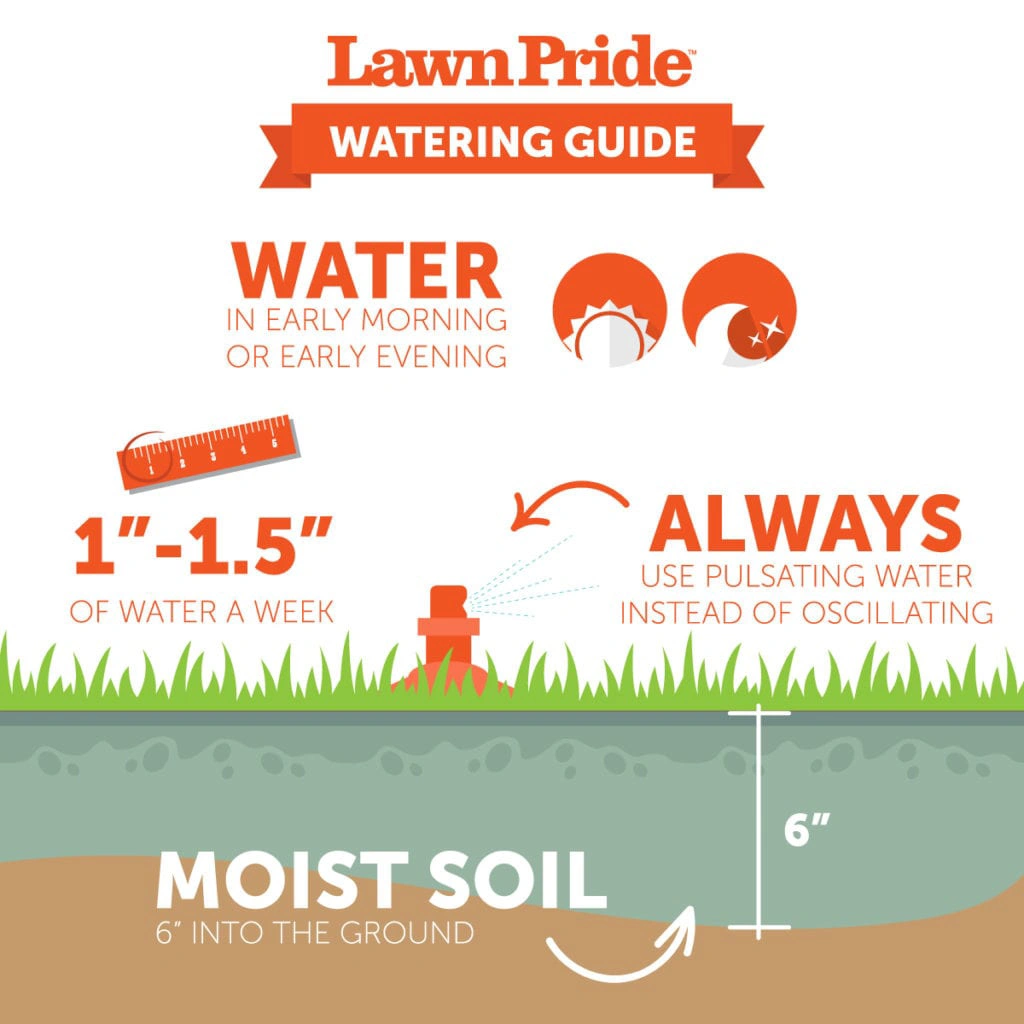
Here is your go-to timeline for watering your lawn throughout the week. This guide includes specific days, times, and exclusive turf tips to keep your lawn hydrated, healthy, and green. Check it out!

Day 1/Monday
Set that alarm and wake up early! Turn on the sprinkler and water your front lawn early in the morning when it’s cooler outside. On hot, sunny days, 50% of water can be lost to evaporation if watered in the middle of the day. Other factors, such as wind, can reduce the amount of heat that reaches your lawn. Turf Tip: Inspect hoses, spigots, sprinklers heads, and other watering devices for damage, which can waste several gallons of water every minute from leaks. Check once a week or every time you mow.
Day 2/Tuesday
Don’t hit snooze! It’s time to get up early again and water your backyard. Remember to follow the same steps and use the same tips as the front. Turf Tip: Water evenly. Avoid attempting to water your whole lawn in one session. Break up the front, back, and sides into zones, and apply even coverage to all of your grass.
Day 3/Wednesday
Is your lawn thirsty? Turf Tip: A soil moisture meter is an inexpensive and invaluable tool for lawn lovers. Not a fan of gadgets? Take a short stroll across your grass. If the blades don’t immediately stand back up following your footsteps, your yard is thirsty. The evening is a perfect time to grab a hose or watering can and water any shrubbery, decorative plants, and gardens around the house.
Day 4/Thursday
Front yard watering time! Most lawns in this region can survive and thrive on two deep waterings a week. Just keep track of the weather - in particularly hot summer weather, it doesn’t hurt to water three times a week. You want to shoot for at least an inch to 1.5 inches of water every week. Turf Tip: Place an empty tuna can in the yard; when it is full of water you’ve hit your inch. Stay up to date on the latest trends and proven tactics for efficient lawn watering. Are you planting drought-resistant plants and flowers? Do you have a rain barrel (or two)? Have you tried drip irrigation? Home improvement centers, nurseries, local community groups, and even social media are all terrific places to sharpen your lawn care skills.
Day 5/Friday
Time to water again in the backyard, too. Don’t forget to keep an eye on your lawn watering devices. Turf Tip: Reposition hoses and sprinkler heads so that they are not watering the driveway, the street, or the neighbor’s lawn.
Day 6/Saturday
Saturdays are a great time to tackle weeds and inspect your lawn for discolored patches or other areas of concern. Depending on the problem, you may need to apply patch repair seed, herbicide, or fertilizer. (Make sure to contact your local experts if this happens!) Catching these issues early and often will help ensure a healthy, resilient lawn all year long. You’ll also want to look for bad bugs, such as grubs, sod webworms, chinch bugs, and cut worms, and kill them before they kill your yard. But remember, many insects found around the lawn are not bad at all. Good guys include bees, ladybugs, praying mantises, earthworms, and more. Some of these even prey on the bad bugs!
Day 7/Sunday
Grab those grass-stained white sneakers and mow like a pro. The less mowing, the better, and remember to keep your grass long. Long grass holds more water, reducing the amount you need to water. It’s also more drought tolerant. Turf Tip: Giving your grass a buzz cut can cause it to turn brown or even die. Remember to keep your mower well maintained and the blade sharp. Grill out or cool down inside and enjoy the rest of your day relaxing. Just remember to set the alarm before you go to bed!
Two quick things to remember when it comes to watering your lawn:
One - be sure to understand your community’s irrigation and water use ordinances. Many cities and towns have some type of watering restriction(s) in place, such as odd/even irrigation days or no lawn watering during middays. Cross Connection Control, or CCC programs, are another common division in local government, and maintain a long list of irrigation dos and don’ts designed to protect the community’s potable water supply. Two - we sure hope this goes without saying, but don’t water right before, right after, or - God forbid - during a rainstorm. Using water wisely is something we all can and definitely should do.
